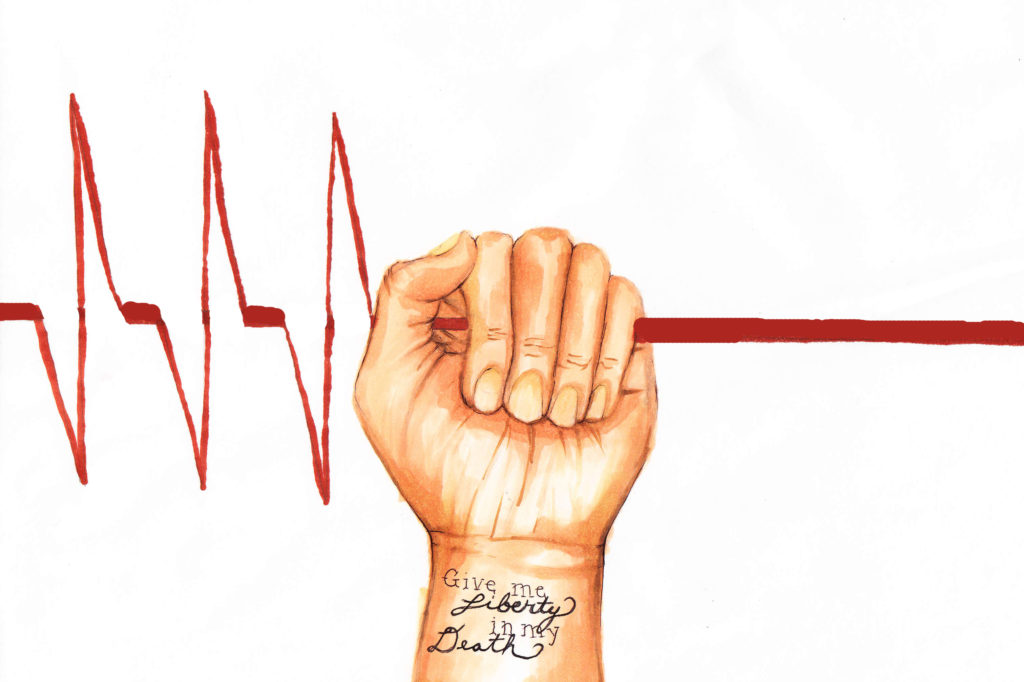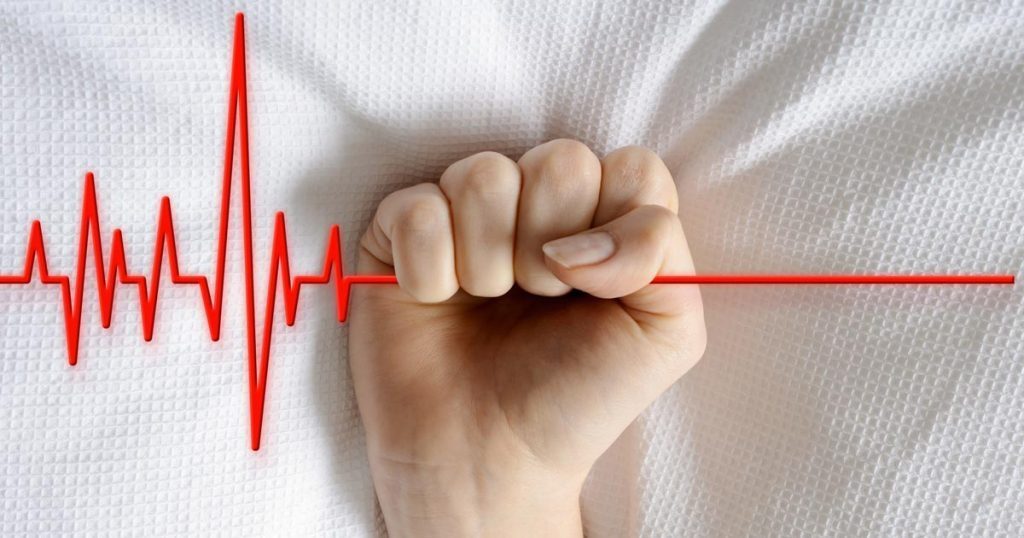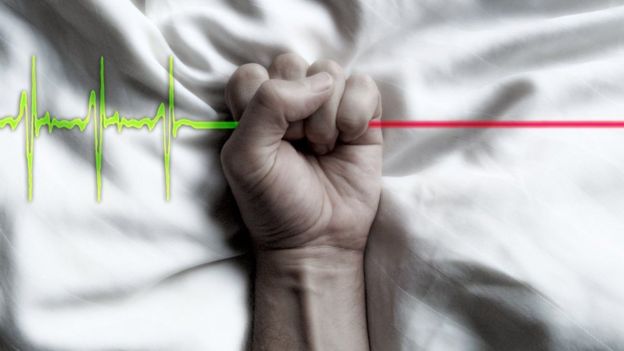The Patient Body
The Patient Body: “Rome has spoken, the cause is finished”
“The Patient Body” is a monthly column by Ann Neumann about issues at the intersection of religion and medicine. This month: New hope for a break in the Catholic Church's grip on healthcare

The two councils sent their decrees to the Apostolic See and the decrees quickly came back. The cause is finished; would that the error were as quickly finished.—Augustine, early 5th century, Sermon 131:10, at the time of the Pelagian Heresy
The Catholic Church’s enormous global influence over healthcare is currently under threat due to, of all things, a dispute with board members of a civil corporation in Belgium.
If I sound overly dramatic, it’s for a good – and hopeful – reason.
The Brothers of Charity is a global order of Catholic men that sponsors 15 psychiatric hospitals in Belgium. The Brothers of Charity Group, not to be confused with the order of Catholic men, runs the hospitals, but only three of its fifteen board members are actual Brothers.
When the hospitals’ board declared last spring that it would permit euthanasia in its facilities, the three Brothers of Charity members asked their colleagues to reverse the decision. The board refused, and the Brothers appealed to the Vatican’s Congregation for the Doctrine of Faith, which declared the board’s decision a violation of Catholic doctrine and, in October, summoned the board to the Vatican.
For years I’ve been an alarmist—justifiably, I still believe—about the role of the Catholic Church in the delivery of health care. More than 600 hospitals and hundreds more elder or assisted living facilities in the US are sponsored by the Church. Although the majority of patients served at these facilities are not Catholic, Church sponsorship of hospitals influences everything from access to women’s reproductive health services like abortion, tubal ligations, and access to the morning after pill for rape victims. Several lawsuits attacking the Affordable Care Act have permitted Catholic organizations (and private evangelical corporations) to deny women contraceptive coverage. And the most vocal opponents of aid in dying movements in states across the US are Catholic institutions and organizations. Patients seeking access to aid in dying will not find it at Catholic hospitals.
For just as long I’ve been trying to call attention to the fact that aid in dying has the potential to define, and re-define, the Church’s role in the delivery of health care.
Women’s health care rights will not do so; they continue to be eroded by the bulwarks of misogyny that render women’s needs secondary and egregious. But patients’ access to aid in dying, a service requested by both men and women, has successfully addressed patient suffering more broadly and has won some momentous victories in the past decade, providing necessary social and medical protections for patient autonomy.
This advancement of legal aid in dying has the potential to put Catholic facilities in a bind.
***
Catholic sponsorship of a hospital can mean anything from name-only to bishops’ direct oversight, depending on a facility’s history. In the US, Catholic hospitals receive, on average, only about 3 percent of their funding from Catholic sources, yet their services can still be the purview of the local deacon. The challenge for Catholic hospitals—and the Church—comes when laws require their participation in legal medical practices that are considered problematic by the Church. Which is exactly what is happening in Belgium. The Catholic Church has consistently opposed the legalization of aid in dying, even as eight countries, largely in Europe and South America, and seven US states have legalized it in some form.[1] Belgium and the Netherlands are the only two countries where non-terminal and mentally ill patients may use euthanasia to end their lives. If the board does not give in to the Vatican, the Church may withdraw the Brothers of Charity’s sponsorship of the hospital.
The visit of the Brothers of Charity Group’s board to the Vatican has not yet been scheduled, but reporting about the case has highlighted greater conflicts within the Church. Not all of these conflicts are substantial or even real, but the media’s partisan portrayal treats them like they are. As US media has polarized over the past decade, so has Catholic media.

America magazine, for instance, reported that, “A Belgian religious congregation is defying Pope Francis’ order to stop allowing euthanasia in its psychiatric hospitals, saying that its decision to do so is fully consistent with Catholic doctrine.” Such stories make it sound as though it was the order that defied the Vatican when, in fact, it was the 12 non-Catholic hospital group board members who were defiant. Stories like this wrongly throw the Orders’ board members under the wheels of the conservative Catholic bus along with the lay members.
Before issuing its summons, the Vatican ordered the board to return to compliance with Church law, prompting Herman Van Rompuy, the former Belgian prime minister, former president of the European Council, a devout Catholic, and member of the hospitals’ board, to tweet: “The time of ‘Roma locuta causa finita’ [Rome has spoken, the cause is finished] is long past.” In response, Conservative Catholic publications chose headlines declaring things like: “Pope Attacked on Twitter about Euthanasia.”
Worth noting too is the social media flame war the election of Donald Trump has caused between conservative Catholics who allied with evangelicals to give Trump the White House and traditional Catholics who found Trump to be an abominable violation of Church morality.[2]
However repugnant Ross Douthat, the hyper-conservative New York Times columnist, may be, he provided us with this adroit summation of Vatican politics in 2015, in the aftermath of the Pope’s second synod on the family:
The entire situation abounds with ironies. Aging progressives are seizing a moment they thought had slipped away, trying to outmaneuver younger conservatives who recently thought they owned the Catholic future. The African bishops are defending the faith of the European past against Germans and Italians weary of their own patrimony. A Jesuit pope is effectively at war with his own Congregation for the Doctrine of the Faith, the erstwhile Inquisition — a situation that would make 16th century heads spin.
Douthat’s right to point out the way social media has compounded and fortified largely false notions of the Pope’s liberal effects.[3] But what are facts in today’s polarized media climate, where Douthat’s juvenile expressions of exasperation will garner more than 600 comments in The New York Times?
The Vatican’s rifts are also evident in the endless scrapping over changes at the Pontifical Academy for Life, casting them as a tragic turn away from morality. Three months into his appointment, Archbishop Vicenzio Paglia ended the lifetime tenure of the academy’s 172 members, all John Paul II appointees and resoundingly, politically “pro-life.” Paglia also removed a loyalty pledge that was inaugurated by John Paul II with the Academy’s formation. Luke Gormally, a former member of the academy, told the National Catholic Register that Paglia’s removal of a fidelity pledge “means the academy would no longer have a ‘useful role” in providing an umbrella for the Catholic pro-life movement, which takes the ‘church’s authoritative teaching on contraception as foundational.’”[4]

And just last month, an event organized by the Pontifical Academy for Life again highlighted discontent in the Church. It was timed to coincide with the first ever World Day of the Poor. The World Medical Association descended on the Vatican to discuss end of life issues with the Pope.
Conservative Catholic outlets covering the event focused on the pope’s condemnation of “overzealous treatment” of patients whose lives are ebbing. “It is morally licit to discontinue therapeutic measures when disproportionate,” he stated. (The Pope’s entire letter is here.) Not all conservatives are comfortable with such explicit support for removing dying or brain dead[5] patients’ physiological support—certainly not after powerful conservatives in the US and around the world have invested so much over the past few decades into embedding their efforts in Church dogma and questionable but emotionally compelling cases—like that of Terri Schiavo or the child Charlie Gard.
But what non-Catholic and “secular” publications emphasized from the event last month was the Pope’s call for more equality in health care delivery around the world, at a time when US lawmakers are using every resource, including their hideous tax plan, to end any accessible form of insurance. “Pope denounces health care inequality in rich countries,” wrote Reuters. And, “Pope to lawmakers: protect all people with health care laws,” wrote the Washington Post
***
The board that runs the fifteen Brothers of Charity hospitals decided to permit euthanasia in the wake of a 2016 lawsuit in Belgium that fined the St. Augustine rest home for preventing a woman from being euthanized. The Brothers of Charity order have already said that they may cease sponsorship of the hospitals if the board does not reverse its decision.
And this is why I am hopeful that Catholic sponsorship of hospitals may be vulnerable.
Undoubtedly, the political, medical, and religious climate in Belgium, where euthanasia has been legal since 2002, is very different from here in the US. But those watching the Brothers of Charity case have long seen a moment of reckoning coming over the divergence in general medical practice and Catholic health care provision.
In the US, the majority Catholic Supreme Court (with its new resident expert on euthanasia, Neil Gorsuch) and a bevy of evangelical and Catholic Republican legislators (who employ a “pro-life” litmus test to prop up their legitimacy) protect Catholic sponsored hospitals from providing all medical services. Under the guise of “religious freedom” certain Christian entities, like Catholic hospitals, continue to operate in ways that harm or challenge those who have different views, lifestyles or beliefs. And yet, the Brother’s case could establish a new model for this longstanding relationship—one that may translate to our US climate.
It’s a hope. After watching patients’ rights suffer for decades because of our failure to separate a particular kind of Christian ideology from humane medical practice, any such hope is worth celebrating.
***
[1] Aid in dying, euthanasia, and assisted suicide have definitionally and politically complicated uses around the world. Both opponents and the practice’s most strident supporters tend to use the terms interchangeably. While aid in dying (predominantly used by supporters in the US) refers to the legal ability of a doctor to prescribe lethal medication to a terminal patient, laws here require that the patient ingest the medication themselves. US opponents prefer the term assisted suicide because it best associates their understanding of the practice with suicide. Euthanasia is the predominant term used elsewhere in the world. It often implies that doctors may administer the lethal medication.
[2] I am playing with the use of “traditional” here in an attempt to remind us of a time, some 60 or so years ago, when a significant number of Catholic adherents and leaders sought to modernize the faith and employ its social justice teachings for the betterment of all.
[3] Don’t miss Douthat’s August column, “The Vatican’s America Problem,” for yet more explicit doomsaying.
[4] According to Paglia, the pledge was always optional.
[5] Since the early 1980s brain death has been the definition of death in the world medical community. Patients and families have, since the time of the court decision on Nancy Cruzan’s case, been legally able to remove or deny physiological support. Yet Catholic and evangelical conservatives have fought to remove patient autonomy by arguing that physiological support is largely therapeutic, “comfort care” and have used the emotional power of some prominent cases to erode medical ethics.
***
Past “The Patient Body” columns can be found here.
***
Ann Neumann is author of The Good Death: An Exploration of Dying in America (Beacon, 2016) and a visiting scholar at The Center for Religion and Media, NYU.
***
Published with support from the Henry R. Luce Initiative on Religion in International Affairs.